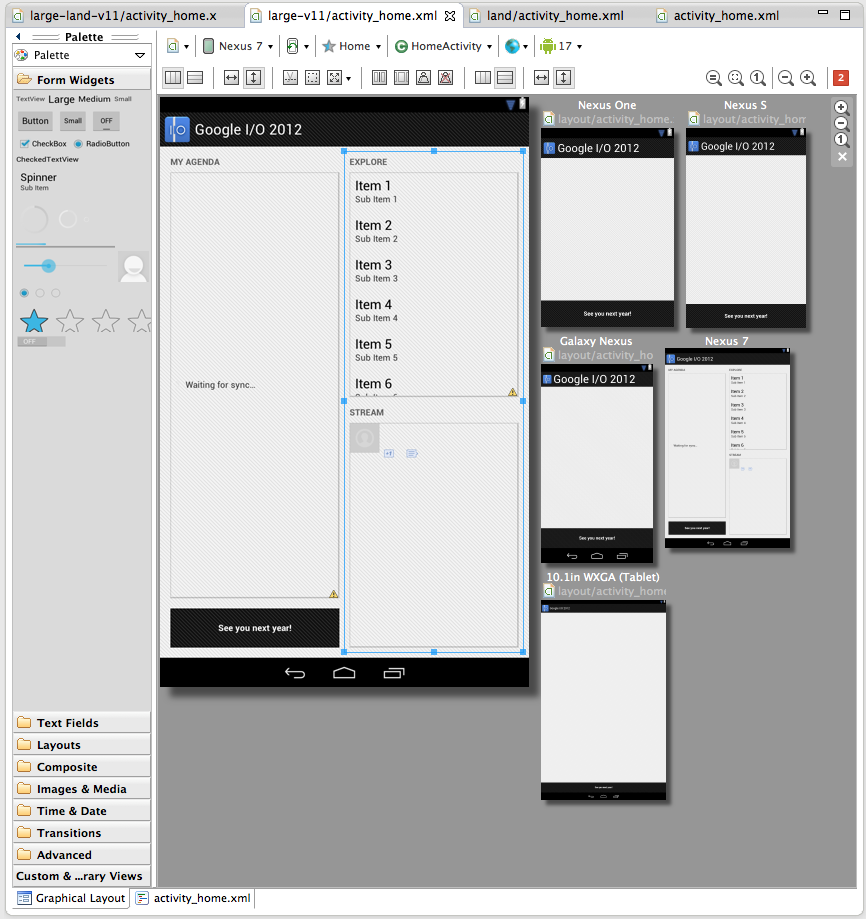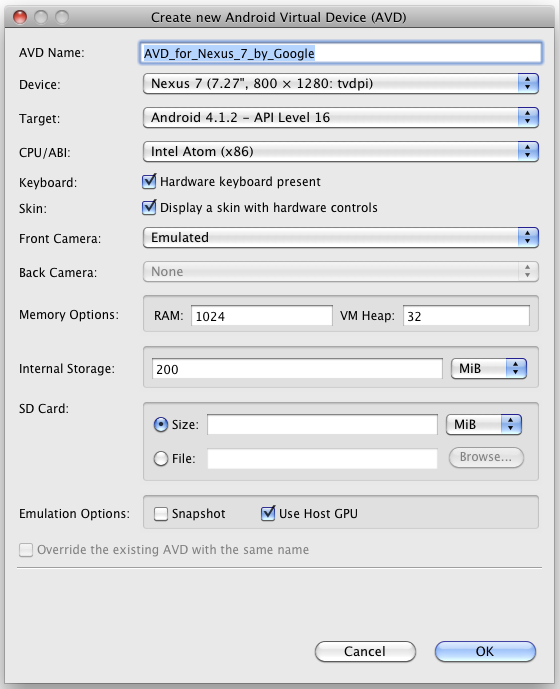Development by Davis: “OASIS adopts AMQPv1: An open standard for smart grid and cloud” plus 5 more |
- OASIS adopts AMQPv1: An open standard for smart grid and cloud
- The Belief Genome: an open source technology startup
- The Future of Knowledge Work
- AMD FirePro Server Graphics Redefining Supercomputing Performance through Power Efficient, Sustainable Technology
- Collaborating to create the most energy-efficient supercomputer
- Android SDK Tools, Revision 21
| OASIS adopts AMQPv1: An open standard for smart grid and cloud Posted: 15 Nov 2012 02:00 AM PST  For governments looking for cutting edge, open source messaging solutions, the recent action by the OASIS standards consortium to approve the Advanced Message Queueing Protocol (AMQP) Version 1.0 is a major development. The need for cutting edge, mission critical messaging options is arising in a variety of contexts: it is a key component to interoperable 'smart grid' frameworks, as well as 'cloud' solutions. |
| The Belief Genome: an open source technology startup Posted: 15 Nov 2012 12:00 AM PST  You know the Human Genome project. Well, this is the Belief Genome project. Instead of mapping genes, Sidian Jones is mapping beliefs—across ages, genders, and geographies. He says that beliefs are what makes us tick. They are how we move about in the world and the why to our decisions. Indeed, from what we're eating for lunch to who we're voting for in the next election, our beliefs affect our lives. And because they can be identified—some basic, some complex, some grouped into systems and religions—they can be mapped. |
| Posted: 14 Nov 2012 02:39 PM PST The world is changing dramatically, both expanding and contracting in ways that will have a significant impact on everyday life. Old models of work already in flux will seemingly dissolve as new models rise in their place. People working in 2025 may view today's work life as differently as we perceive the office life of the 1800′s. The intent of this paper is to identify trends likely to shape The Future of Work, and seed the reader with information and ideas to imagine the future that is rushing towards us. Intel Labs White Paper: The Future of Knowledge Work This posting includes an audio/video/photo media file: Download Now |
| Posted: 14 Nov 2012 12:00 AM PST AMD (NYSE: AMD) has collaborated with the University of Frankfurt's Institute for Advanced Studies (FIAS) to deliver a new standard in power-efficient supercomputing with the SANAM supercomputer, securing the number two ranking on the latest Green500™ Lis... |
| Collaborating to create the most energy-efficient supercomputer Posted: 14 Nov 2012 11:38 AM PST Today marks a significant milestone in efficiency for high performance computing (HPC). For the first time, an Intel-based system has topped the Green500 list, an achievement made possible through the use of the new Intel® Xeon Phi™ co-processor launched this week at SC12. The record-breaking computer, called Beacon, belongs to our collaborators at the National Institute for Computational Sciences (NICS). NICS is a well-known center in high-performance computing, established in partnership with the University of Tennessee and Oakridge National Lab (ORNL). Beacon is an appropriate name as it lights the way for future systems by achieving 2.5 billion floating point operations per section for each Watt of power consumed (2.5 Gigaflops/W).
Green500 was established in 2007 and ranks high performance computers in terms of energy efficiency: performance per watt. This increased focus on energy consumption is essential to the future of computing from the tiniest mobile devices to the largest supercomputers. It's particularly vital to the development of practical Exascale computers over the next decade. This result shows the benefit that a significant increase in general purpose, chip-level parallel processing brings to the table with the 60-core Xeon Phi. While our team was working on our own Green500 submission, it was not easy to find resources and justification to build a large cluster designed specifically to target energy efficiency. Dr. Glenn Brook at NICS and team had the resources to design a new supercomputer from ground-up aimed at energy efficiency. Intel had the knowledge of Xeon and Xeon Phi algorithmic optimizations needed to achieve the ambitious goals. Looking back, the progress has been significant. Just four years ago, the highest ranking Xeon cluster on the Green500 list stood at only 265 Megaflops/W. Today's achievement represents nearly a 10-fold improvement for Intel Architecture in just four years. This is the latest step in a long journey towards parallel computing and many-core that began over eight years ago – as described in part 1 of our many-core web documentary. More importantly, in working round the clock towards this goal the team learned much more in the past few months than they could have otherwise. They developed significant innovations from algorithms to system hardware designs aimed at energy efficiency. This was a top-down, energy efficiency focused effort to co-design every software-hardware element that mattered. Pradeep Dubey, our Intel Fellow leading the algorithmic innovations also remarked that "this is the most remarkable collaboration story that I can think of in my Intel career so far." In addition to the work with NICS, the collaboration spanned many teams within Intel product groups and Intel Labs. The team members were also spread across many time zones. According to Pradeep, this was "yet another proof point of how we can achieve almost anything if truly passionate people collaborate to complement their skills." |
| Android SDK Tools, Revision 21 Posted: 14 Nov 2012 12:27 PM PST Posted by Xavier Ducrohet, Android SDK Tech Lead, and Angana Ghosh, Product Manager in Android Along with the Android 4.2 SDK, we also launched a brand new update of the Android SDK Tools (Revision 21). The update includes new tools and capabilities that can help you work more efficiently as you create applications. Tools such as a new multi-config editor, and new Lint rules will help you develop apps more quickly, while a new UI test framework will give you more ways automate testing and QA for your apps. For new developers, one-click SDK download and new app templates help you get started more quickly. Multi-config editorA new multi-configuration editor allows you to develop and prototype your UI across various orientations, screen sizes and locales. For example, while editing your layout in portrait mode, you can see if your edits aren't visible in the shorter landscape orientation. You can see previews for other screen sizes from small phones to large tablets, you can see previews for the layout using all the available language translations in your app, and so on. You can even see how the layout appears when it is included as a fragment in a different larger layout. Finally, Android allows you to create specialized layouts for any of these configurations, and the multi configuration editor shows you these overridden layouts.Here is a screenshot of the layout editor showing one of the layouts from the Google I/O application, across a variety of screen sizes.  More app templatesTools R21 brings three new app templates to help you to easily add new screens to your app. There's a new full-screen activity for use as a photo or video viewer, a settings activity to handle basic user preferences and a login activity to capture username/password. UI Automator Test FrameworkOne common approach to UI testing is to run tests manually and verify that the app is behaving as expected. UI Automator is a new software testing framework available in Tools R21 that provides you with tools to easily automate UI testing tasks. It provides a GUI tool to scan and analyze the UI components of an Android application (uiautomatorviewer), a library containing APIs to create customized functional UI tests, and an execution engine to automate and run the tests against multiple physical devices. UI Automator runs on Android 4.1 (API level 16) or higher. To learn more head over to the UI Testing documentation.One-click SDK installerNew Android SDK developers now have a convenient way to download all the various SDK components like Tools, Platform Tools, Eclipse ADT, and the latest system image with a single click. Existing developers can continue to manage their SDK components and get updates through the SDK Manager.Revamped AVD creation dialogThe new dialog makes it easier to create Android Virtual Devices (AVDs) matching real device profiles. The AVDs will also appear in the layout editor to show you how the layouts will look. More Lint rulesAnd to wrap things up there are 25 new lint rules which catch several common sources of bugs, for example deviations from Android design guide for icons, checks for mismanaged wakelocks, common sources of locale-related bugs and so on. So make sure you upgrade and let Lint loose on your projects before your next app update!A minor bug-fix to the Android NDK is also available. For a complete list of what's new, see the release notes for SDK Tools R21, ADT 21.0.0 and Android NDK R8c. |
| You are subscribed to email updates from Developers by Davis To stop receiving these emails, you may unsubscribe now. | Email delivery powered by Google |
| Google Inc., 20 West Kinzie, Chicago IL USA 60610 | |


No hay comentarios:
Publicar un comentario